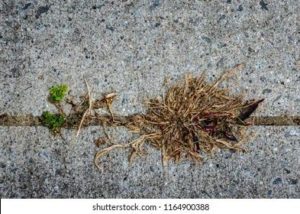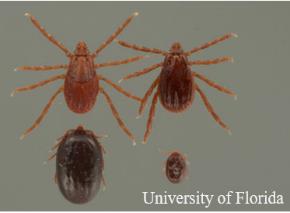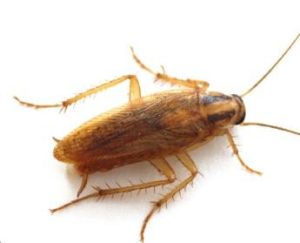What are herbicides, and how do they work?

Herbicides are chemicals used to manipulate or control undesirable vegetation. Also known as “weed killer,” herbicides are formulated in various chemical mixes to target different species of vegetation. The mode of action for the eradication of the weed can be different as well.
Herbicides can act by inhibiting cell division, photosynthesis or amino acid production or by mimicking natural plant growth hormones, causing deformities. Application methods include spraying onto foliage, applying to soils and applying directly to aquatic systems.
The most widely used herbicide contains the active ingredient Glyphosate and includes brand or common names of Roundup, Ultra, Rodeo, TouchDown Pro, Accord, etc. Applied primarily to genetically engineered, glyphosate-resistant varieties of soybeans, corn, canola and cotton. Also applied to control woody plants. Because of its broad spectrum and relatively low toxicity to animals, it is used in horticulture and in the control of aquatic macrophytes. Applied to the foliage and transported with sugars to metabolic sites where they inhibit amino acid production. Effects will manifest in two or more weeks as discoloration of foliage and deformations in new growth.
There are several “stressors” that may have an adverse effect on the performance of the herbicide that need to be considered as well. For example, elevated temperature frequently tends to increase the toxicity of chemicals which may lead to health concerns for non-target species including mammals and aquatic animals.
Herbicides are considered a pesticide and need to be handled in a safe manner. Personal Protective Equipment should be utilized in accordance with label and Safety Data Sheet (SDS) instructions.
Submitted by: Rich Gibson ACE, CFSQA
The Brown Dog Tick

Order: Ixodida Family: Ixodidae Genus: Rhipicephalus Species: R. sanguineus
Adults are 2.28 to 3.18 mm in length and 1.11 to 1.68 mm in width. They do not have ornamentation on their backs. This tick follows the normal developmental stages of egg, larva, nymph, and adult. It is called a three-host tick because it feeds on a different host during each of the larval, nymphal, and adult stages. However, the hosts tend to be of one species. Larvae feed for 5–15 days, drop from the host, and develop into nymphs after 1–2 weeks.
The brown dog tick, Rhipicephalus sanguineus Latreille, has been found around the world. Many tick species can be carried indoors on animals, but most cannot complete their entire life cycle indoors. The brown dog tick is unusual among ticks, in that it can complete its entire life cycle both indoors and outdoors[1]. Control of this tick by removing dogs is likely to result in alternative host selection. If it cannot find a dog nearby, this tick is likely to feed on other mammals, including domestic animals and humans. Several pesticides are labeled for tick control including allethrin, bendiocarb, carbaryl, chlorpyrifos, esfenvalerate, and permethrin (or other pyrethrins).
Submitted by: Rich Gibson, ACE, CFSQA
Importance of Thorough Inspections and Client Interviews

Recently, one of RK Environmental Services’ (RKE) larger clients was having German cockroach pressure in several areas of the facility. A detailed assessment of the IPM program was performed and key areas of activity identified, and a corrective action plan proposed. The corrective action plan called for a commercial intensive treatment to flush out food preparation equipment in multiple kitchens suspected of harboring German roaches. The commercial intensive treatment was performed however, the following two weeks the client reported ongoing cockroach (one or two insects) sightings in same areas. This was unusual as the structural and sanitation conditions were good during the inspections.
Follow Up Inspections – A follow up inspection of the facility was performed focusing again on the food prep equipment, as well as checking for structural and sanitation opportunities. During this visit, the RKE team again asked the area staff if they’d seen any roaches and where, at this time a worker reported the following key bits of information:
1. “We’re seeing one or two roaches in the floor mats at the kitchen prep stations.”
2. “We’ve seen them in the floor cleaning equipment such as brooms.”
New Information – Armed with this new information, the client was asked where the floor mats and cleaning equipment were stored. Upon inspection of this area, the mats were being held in a utility room, this room had a history of German roach activity, structural opportunities for roach harborage such as cracks in hollow brick walls and was also located adjacent to the trash compactor. The root source for roaches in multiple kitchens had been identified.
RKE performed a repeat commercial intensive treatment of the hot spots in the kitchens as well as the utility room where the mats and cleaning equipment were being stored. Supplemental traps for ongoing monitoring were also installed.
- Take away tips:
• The client may not always have all the details regarding pest activity so interviewing area workers may provide key details on pest sightings.
• If the area of the sighting has minimal or no potential for the target pest to harbor it may be an issue of pests being transferred or transported into the area of sightings.
Submitted by: Ricardo John, ACE
Regional Operations Manager
RK Environmental Services, LLC














